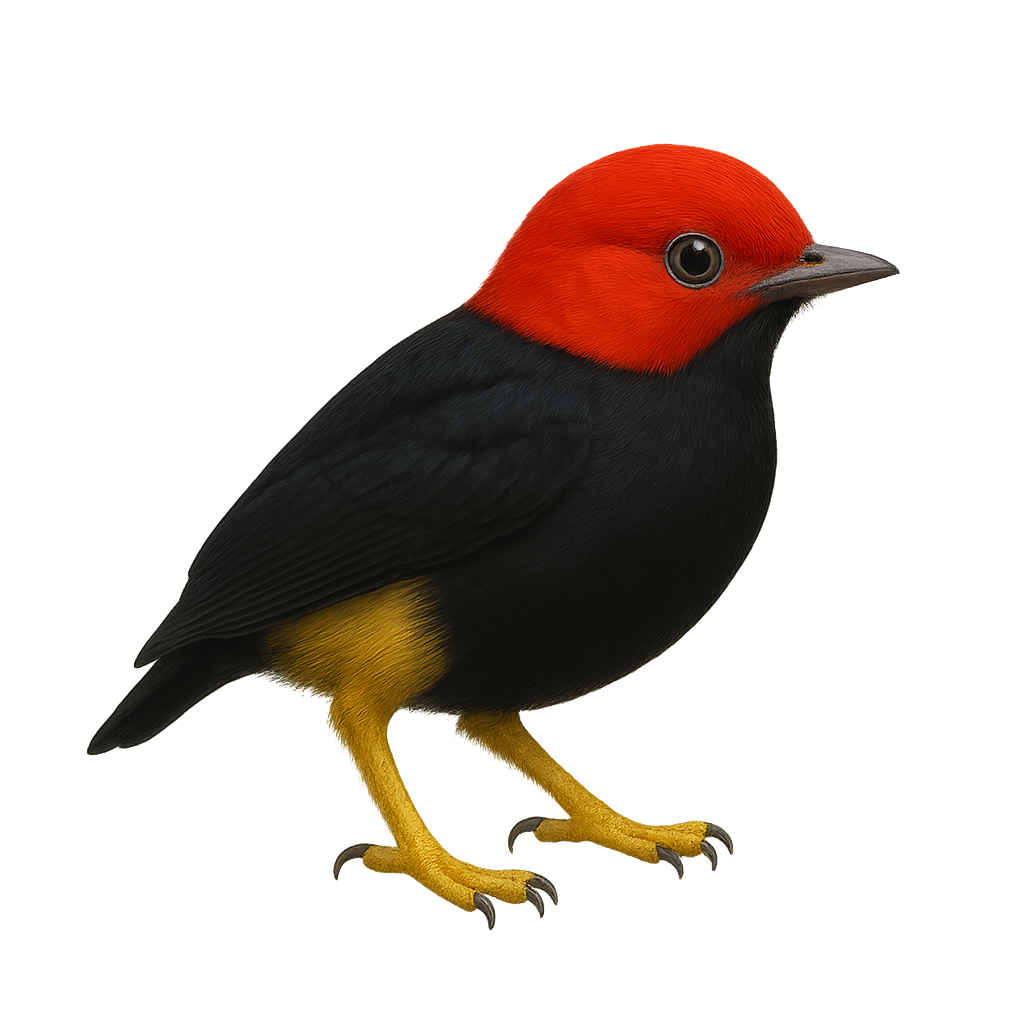Your wildlife photography guide.
Explore the red-capped manakin in detail, study its behavior, prepare your shots.
Where to observe and photograph the red-capped manakin in the wild
Learn where and when to spot the red-capped manakin in the wild, how to identify the species based on distinctive features, and what natural environments it inhabits. The WildlifePhotographer app offers tailored photography tips that reflect the red-capped manakin’s behavior, helping you capture better wildlife images. Explore the full species profile for key information including description, habitat, active periods, and approach techniques.
Red-capped Manakin
Scientific name: Ceratopipra mentalis

IUCN Status: Least Concern
Family: PIPRIDAE
Group: Birds
Sensitivity to human approach: Suspicious
Minimum approach distance: 5 m
Courtship display: March to May
Incubation: 18-21 jours
Hatchings: March to June
Habitat:
tropical rainforests, understory, forest edges
Activity period :
Primarily active during the day, with peak activity in the morning and late afternoon.
Identification and description:
The Red-capped Manakin, Pipra mentalis, is a small, brightly colored bird found in the tropical forests of Central America. Males are particularly recognizable by their vivid red heads contrasting with their black bodies, while females have more subdued green plumage. These birds are famous for their spectacular courtship displays, where males perform complex dances to attract females. They primarily inhabit the understory of humid forests, feeding on fruits and insects. Although relatively common within their range, their habitat is threatened by deforestation. They are generally suspicious, making observation challenging.
Recommended lens:
400 mm – adjust based on distance, desired framing (portrait or habitat), and approach conditions.
Photography tips:
To photograph the Red-capped Manakin, it's essential to blend into the environment to avoid startling it. Use a telephoto lens of at least 400mm to capture detailed images from a distance. Patience is crucial, as these birds are suspicious and move quickly. Early morning hours are best for soft lighting and increased bird activity. A tripod can be helpful to stabilize the camera in the dim understory.
The WildlifePhotographer App is coming soon!
Be the first to explore the best nature spots, track rutting seasons, log your observations, and observe more wildlife.
Already 1 439 wildlife lovers subscribed worldwide

